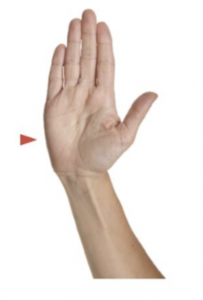What if you could change your life by changing your thoughts?
Affirmations are wonderful tools to subtly program your brain to create new beliefs, which then shape your reality.
By affirming a statement as true it helps our minds accept it as a belief and which moulds our perception of our life.
Let’s firstly explore how to write an affirmation, and then discuss 2 ways of programming these into your body for a positive result, using Brain Integration and Psychological Reversal Techniques.
Writing your own affirmations is a skill that will come with practice. The key points to keep in mind are:
- Aim for what you want. Not what you don’t want.
Look for the opposite of how you are feeling and use that word instead. E.G: Instead of “ I am able to lose weight” say “ I am slim and healthy” (or whatever the desired result from losing weight would be).
- Keep the phrase positive.
The brain does not recognize the word NO or NOT. So instead of saying “ I am not going to fail the test”, say “ I am easily going to pass the test”.
- Keep the phrase in the present tense.
Instead of “ I will be slim and healthy” use “ I am slim and healthy”.
- Use a positive emotion to enhance the affirmation.
For example: gratefully, easily, gladly, confidently, lovingly, quickly, happily
- Affirmations are better said in your native language.
Affirmations on their own don’t work unless you feel, visualise, and get into the positive thought. Just saying the affirmation while feeling completely differently will not help the person. Fake it till you make it can help eventually but affirmations are more effective if the underlying belief system is also supported.
BRAIN INTEGRATION METHOD
The need for ‘brain integration’ arises from the neurological organisation of our brains. When we ‘believe in something’ we hold that belief on 2 levels: firstly on a rational level but also on an emotional level.
An affirmation needs to stack up with what we currently believe or there is no perceived illogical elements so we can accept it rationally but it also needs to engender a positive emotional response in us.
The fact we have an emotional attachment to ideas can be seen sometimes when we are debating an issue, and after a while we recognise that we have ‘lost the argument’ in logical terms, yet we still try to hang onto our viewpoint, at the same time feeling somewhat of a fraud. This is because for most of us, it is harder to change emotionally than logically!
It is worth noting that these criteria for acceptance of a belief is about perception, not necessarily are they based on reality – which explains why one person can hold a set of statements to be self-consistent though they appear quite the opposite to someone else.
An affirmation is designed to change our beliefs to give us a more positive outcome. By using the Brain Integration method we can allow the logical and emotional sides of the brain to integrate and accept the affirmation as true.
Where there is profound attachment to certain ideas, it can be very difficult for people to change. Most of the world’s problems arise from individual and collective examples of this. In kinesiology we attempt to address these problems in individuals using the ‘affirmation programming’ techniques, flower essences, crystals and so on
The need for brain integration:
Given that our beliefs are determined by the two aspects of reason and emotion, and that our beliefs dictate all our actions, what has this to do with brain integration?
Physically, the bulk of the brain consists of the cerebrum, which is separated into two halves or hemispheres, by a long fissure. The hemispheres are connected internally, however, by a large bundle of transverse fibres called the corpus callosum. The seat of our reasoning and our emotions seems also to be in the cerebrum, our reasoning is associated with the left hand hemisphere of the cerebrum whereas emotional and creative activities are associated with the right hand hemisphere.
So we need both hemispheres of our brain to work together to accept a belief. The belief must be accepted rationally and emotionally for us to fully integrate it into our awareness.
BRAIN INTEGRATION TECHNIQUE
Repeat the affirmation while bringing both arms together and locking the fingers together over centre of chest. Repeat 3 times.
By moving both arms at once, both hemispheres of the brain must activate to control the arm movements, and in order that the movements are co-ordinated, the hemispheres much be communicating. As the affirmation is being said at the same time as the arm movement, communication of the two hemispheres in relation to the rational and emotional aspects of the affirmation seems also to be facilitated.
Also when hands are moved in to the chest there is a tendency for them to come in with a bit of a bump on the chest (particularly if the movement is done briskly). Behind the breastbone lies the thymus gland, which is associated with having courage, and one way to stimulate this is to use the ‘thymus tap’. It may be the bump gives us some courage to aid the process of integrating a new belief.
Also you are bringing the affirmation through your heart chakra and clasping it to your heart.
PSYCHOLOGICAL REVERSAL TECHNIQUE
For affirmations that begin ‘I want … ‘
If saying this affirmation makes both sides’ SIM unlock, we need to psychologically reverse them so they want to do the goal.
E.g.: I want to loose weight – I want to loose 5 kgs.
I want to stop smoking.
I want to be well.
Repeat affirmation three times while tapping on Small Intestine 3 acupuncture point on side of hand. This spot is indicated by the red arrow below and is the third point on the Small Intestine meridian – the Karate chop point!
Repeat on right and left hand points.
This works because the small intestine absorbs good food and releases bad food onto large intestine and it does this on a mental level, absorbing good thoughts and releasing negative ones.

